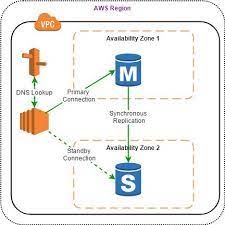Amazon RDS
Relational Database Service
Relational Database Service - RDS
Relational Database Service.
A traditional database organizes data in tables and the tables further arrange the data in columns and rows.
The data can be referenced by primary keys and foreign keys, databases like this is called a Relational Database.
The Relatioinal Databases we have within Amazon’s RDS are :
- SQL Server
- MySQL
- Oracle
- PostgreSQL
- MariaDB
- Amazon Aurora.
Advantages of RDS
Fast: Unlike the traditional database that takes days to set up so it can function at production level, You can provision an RDS to be up and running within minutes. Multi-AZ: You can have your primary database in one availability zone and secodary database in another availability zone Failover capability: If one availability zone goes down due to natural disaster Amazon will switch automatically to the secondary database in another avalability zone. Automated backups: Allows you to have backups either weekly or monthly which ever on as you have specified. Read Replica: This is read-only copy of the primary database.
Relational Database Service is mainly used for OLTP.
What is OLTP?
It means Online Transaction Processing. It is used in processing data from online transactions in real-time, e.g banking transactions, customer orders, payment and booking system. So invariably RDS is your best choice for online data processing. Unlike OLAP, OLTP is used to complete a large number of small transactions
What is OLAP?
It means Online Analytical Processing. It is used to process complex queries to analyze historical data e.g analyzing net figures from the past 3 years, and it takes a long time to complete.
This is achieved with Amazon Redshift.
Difference between Multi-AZ and Read-Replica
They have almost the same functions but let’s find out what is unique about them

Multi-AZ
The real problem multi-AZ solves is:
Multi-AZ is used to make sure of availability of data and disaster recovery, in a case where the primary database in another AZ(Let’s say us-east-1a) goes down then Multi-AZ give the advantage of secondary database in another AZ(Let’s say us-west-2b) becasue the database is replicated accross the two availability zones to solve the problem of making sure we always have access to our data in the database.

Read Replica The problem Read Replica solves is: Read Replica Boosts performance of the database. How does that happen? A read-only copy of the primary database is replicated across different AZ’s, it can also be replicated across regions which enables scalability. With Read Replica, you get your own unique DNS endpoint different from the endpoint of the primary database. Read Replica can be promoted to a database. You must have automatic backup in order to deploy read replica.
note: These notes were taken on A Cloud Guru.